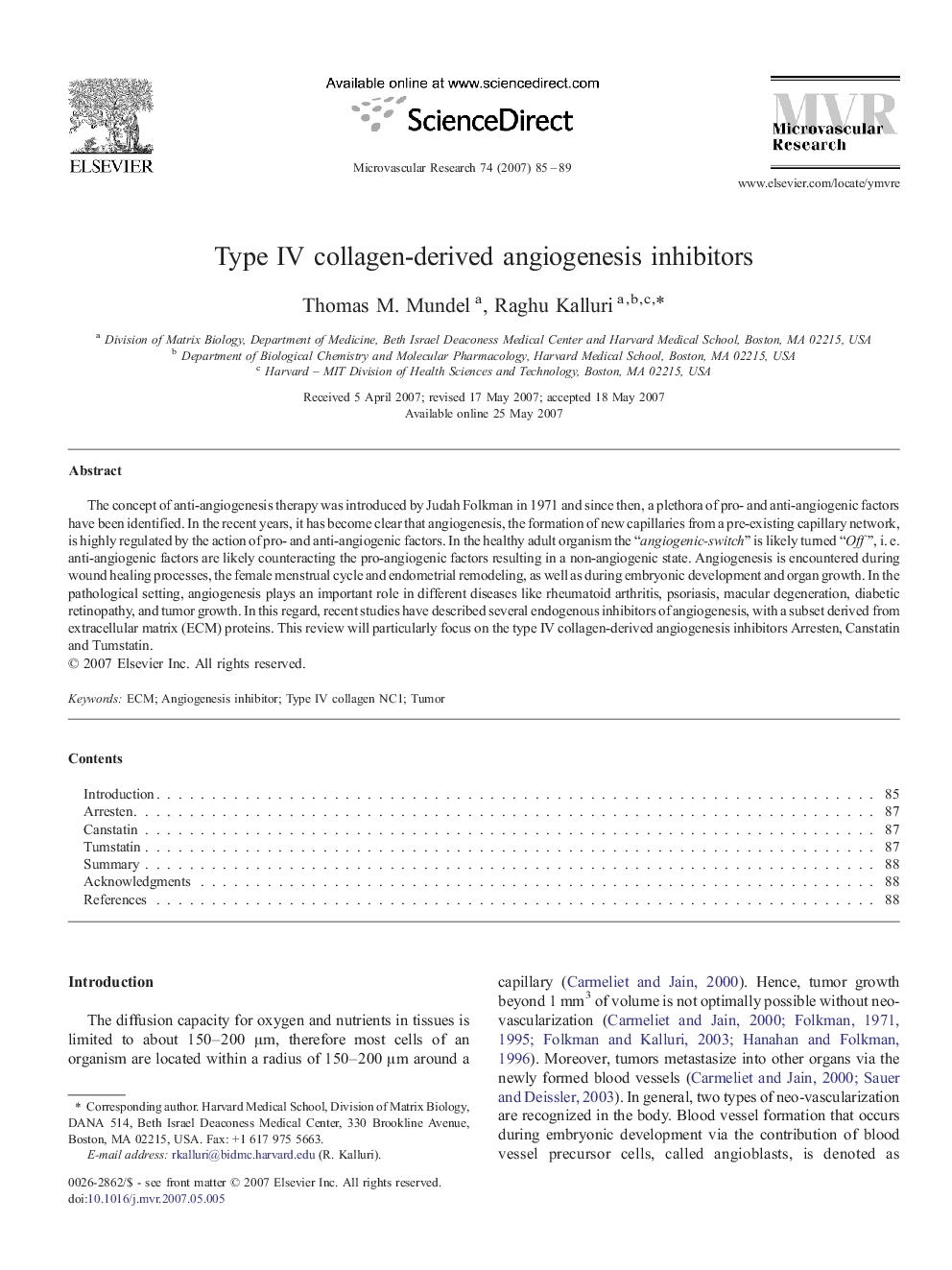| Article ID | Journal | Published Year | Pages | File Type |
|---|---|---|---|---|
| 1995513 | Microvascular Research | 2007 | 5 Pages |
The concept of anti-angiogenesis therapy was introduced by Judah Folkman in 1971 and since then, a plethora of pro- and anti-angiogenic factors have been identified. In the recent years, it has become clear that angiogenesis, the formation of new capillaries from a pre-existing capillary network, is highly regulated by the action of pro- and anti-angiogenic factors. In the healthy adult organism the “angiogenic-switch” is likely turned “Off”, i. e. anti-angiogenic factors are likely counteracting the pro-angiogenic factors resulting in a non-angiogenic state. Angiogenesis is encountered during wound healing processes, the female menstrual cycle and endometrial remodeling, as well as during embryonic development and organ growth. In the pathological setting, angiogenesis plays an important role in different diseases like rheumatoid arthritis, psoriasis, macular degeneration, diabetic retinopathy, and tumor growth. In this regard, recent studies have described several endogenous inhibitors of angiogenesis, with a subset derived from extracellular matrix (ECM) proteins. This review will particularly focus on the type IV collagen-derived angiogenesis inhibitors Arresten, Canstatin and Tumstatin.
